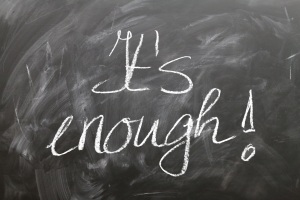Hoarding: Treatment, symptoms, and personal impact/costs

Although it’s not something that many individuals speak openly about, problematic hoarding is surprisingly common and affects about 1 in 20 individuals.
The topic of hoarding is rarely met with disinterest. Maybe that’s because nearly all of us can relate to hoarding on one level or another.
Perhaps you yourself have been touched personally by hoarding. You may have a strong emotional attachment to objects, or you may have a loved one who inexplicably continues to add to an already existing surplus of items. This surplus may be small, or it may be quickly exhausting all remaining living space.
Perhaps you don’t have issues with surplus, but you consider yourself a “pack rat” or a “collector”. Maybe you have a nice collection of art or knickknacks, and you can relate to the urge to over-acquire.
Perhaps you are “organizationally challenged” and have struggled with how to best categorize and store your possessions. Maybe you have difficulties with throwing out your newspapers before you’ve read them, or you hold onto your old college textbooks just in case you might need them one day. Maybe your counters are overflowing with unopened or unfiled mail, receipts, and to-do lists.
Perhaps you are a viewer of one of the recent television shows devoted to various aspects of hoarding. Maybe you watch Hoarders on A&E, Hoarding: Buried Alive on TLC, or Confessions: Animal Hoarding on Animal Planet, and you’re fascinated with the how’s and why’s of hoarding. Although these shows often do justice to illustrating the real impact of hoarding on individuals’ lives, they sometimes paint a rather scattered and/or confusing perspective on the condition. Oftentimes, these shows fail to accurately depict the grueling work and intensive therapy that support long-term recovery, because the time and energy supporting these changes simply cannot be conveyed in before and after pictures.
Perhaps you’ve just stumbled on this blog, and despite not fitting any of the above descriptions, you’ve continued to read.
Hoarding, as a phenomenon, draws us in and is intriguing from an evolutionary standpoint. Control of resources has been (and continues to be) a determining factor in individual and group survival. There are many good reasons to conserve, to avoid waste, and to safeguard oneself and one’s family against the negative effects of resource depletion. In many ways, to smartly stockpile is to survive. Considered in this light, characteristics associated with hoarding may be intrinsically adaptive but, in the case of pathological hoarding, these positive qualities come to be overshadowed by the negative sequelae of the condition.
Regardless of who you are and your relationship (if any) to hoarding, you are likely to know a person or two who has issues with hoarding. Although it’s not something that many individuals speak openly about, it’s surprisingly common; about 1 in 20 individuals exhibit hoarding that is problematic enough to warrant treatment. As a South Florida psychologist who works throughout the greater Palm Beach, Fort Lauderdale, and Miami areas, I help many individuals recover from pathological hoarding. Let’s spend a minute differentiating between non-clinical hoarding (which many of us do in one fashion or another) from clinically-significant hoarding.
In contrast to general clutter, disorganization, or messiness, true clinical hoarding always has a real cost. If no cost or impairment is present, the individual is unlikely to be exhibiting true hoarding in a clinical sense. Please note, however, that despite the myriad potential costs associated with hoarding, individuals who hoard may have difficulties recognizing or fully appreciating these costs.
Costs may be financial, in the sense that one might spend hard-earned money on unnecessary acquisitions or on renting storage units in order to avoid having to discard wanted items. Money necessary to meet needs is reallocated to satisfying wants. Although we’re all guilty of this to some extent, in the case of hoarding, this problem is recurrent and difficult to control.
Other costs are social, in that relationships with friends and family members might become strained or damaged due to differing perspectives about household clutter. Family members of individuals who hoard often have great difficulty understanding why their loved one has such a strong attachment to objects. Consequently, hoarding often creates rifts in personal relationships, and it is not uncommon for frustrated family members to feel personally rejected and issue ultimatums such as, “It’s either me or this stuff. You choose.”
Other serious costs may be related to safety and include vulnerability to potential danger and/or injury, as hoarding may threaten one’s very own physical integrity (e.g., getting trapped under household debris, getting sick due to unsanitary conditions).
Still other costs might be emotional and may include feelings of isolation, alienation, and frustration. I once treated a very intelligent and insightful woman, who, in coming to terms with her hoarding was able to recognize that her own personal value system was person-based, not object-based. She could honestly say, “My life is about relationships and connections, not things.” Although this realization did not automatically liberate her from her emotional attachment to objects, it was this insight that provided the necessary motivation and fortitude she needed to challenge her automatic thoughts.
As was the case with this individual, themes central to hoarding often relate to one’s core value system. Cognitive-behavioral techniques for addressing hoarding target these themes, which might relate to attitudes about being prepared, being responsible, avoiding waste, and maximizing an item’s usefulness (among others). Individuals who hoard often tend to overestimate opportunities for an item’s usefulness (e.g., “What if someday, I need ____________ for ___________?”) and underestimate the impact of the lost time, efficiency, and ease.
Cognitive Behavioral Therapy (CBT) for Hoarding
Cognitive behavioral therapy (CBT) for hoarding directs individuals to examine their own underlying belief systems and ask themselves questions, such as:
- Is it possible to be over-prepared?
- What’s the worst that could happen if I’m not prepared, and how might I deal with that?
- How could I replace this item (or this piece of information) if I needed to do so?
- What are the hidden costs of living this way?
Treatment also involves getting a better understanding of the characteristics of objects that make them more appealing. Many individuals who hoard are very visually oriented, or they may be particularly sensitive to the way an object feels when held. Others may acquire in order to help meet future needs for themselves or others. Hoarding treatment will also target the specific areas in which an individual gets stuck. Does the individual struggle with acquiring, organizing, or discarding? Treatment will target skills in each of these areas in order to address the underlying components of the individual’s hoarding.
Treatment for hoarding is not simply outcome-based. Although most people who seek treatment for hoarding want to radically change their living spaces, an equally important component of treatment is making the necessary personal changes that will promote long-term recovery. Without making these personal changes, any benefits that arise due to decluttering are unlikely to be maintained. This is why hoarding treatment is something that should be undertaken with a psychologist who has specialty training in hoarding (perhaps in combination with a professional organizer).
If you know someone who has issues with hoarding, such as a friend or a family member, you have probably often asked yourself how you can help. Recommendations depend on the specifics of the situation, and should be discussed with a psychologist who is experienced in treating individuals who hoard. In most cases, the best outcomes are obtained through a combination of individual therapy (for the individual who hoards) and group therapy (for the larger family system).
The truth is that as much as you might wish to the contrary, you cannot solve this problem for your loved one. Although with the proper guidance you can be a powerful force in your loved one’s recovery, the changes that need to occur in order for treatment to be successful are personal changes and must be embraced by the person who has difficulties with hoarding. With the best of intentions, many family members try to “kick start” the recovery process by discarding their loved one’s objects without permission. In other cases, permission was obtained but it might have been subtly coerced. In most cases, these attempts will backfire and will add a layer of distrust to an already confusing situation.
If you are looking to help a loved one who hoards, in the early stages of treatment, consider your primary goal to be that of support. Support does not mean that you ignore the problem. Rather, it means that you recognize and acknowledge that this is a very difficult situation for your loved one. Express your concerns, but do so in a loving and supportive manner.
Whatever your relationship to hoarding, remember that help is out there. Although treatment requires time, commitment, and hard work, hoarding is amenable to well-implemented cognitive behavioral therapy (CBT). Find a practitioner that has received the proper training, and recognize that treatment is an investment in yourself that can help you reclaim the life you deserve.
Questions? Comments? Sound off below.
Want Updates about New Content?
Follow Me!
Follow @drstevenseay












Thank you